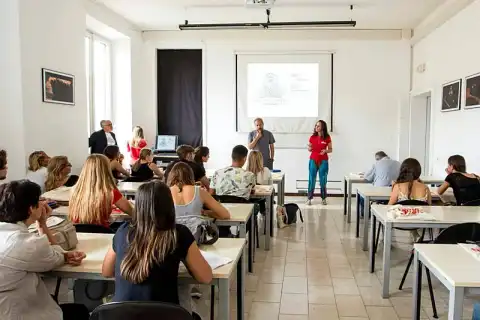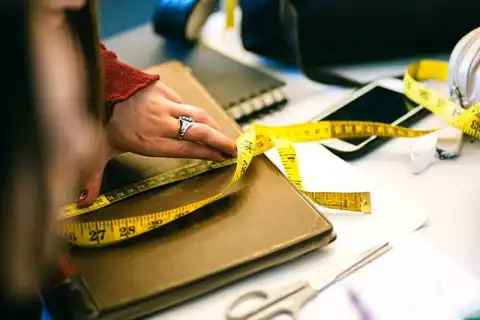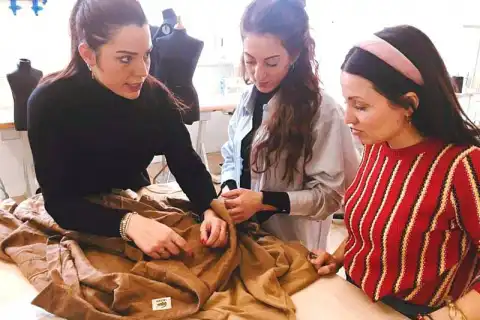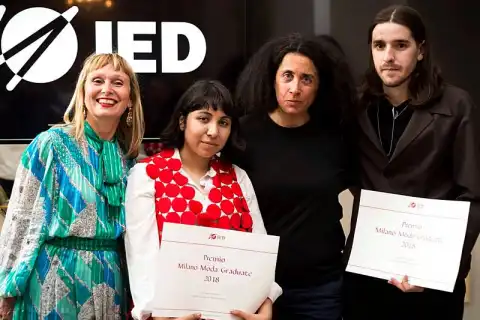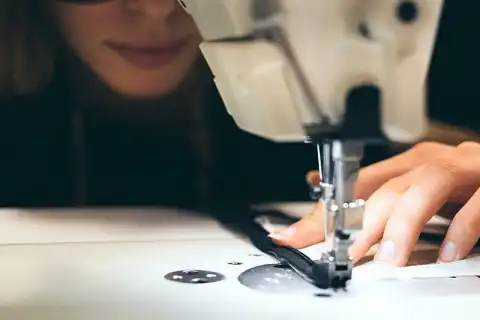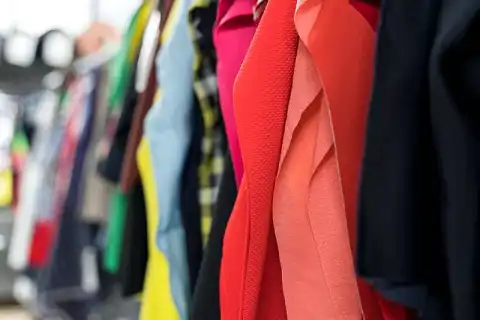Master - Textile Design, Product Research Sustainability
- 1 year
- Duration
- 14,300 EUR
- Price
- November
- Start
- June
- Deadline
- Master
- Degree
- Campus
- Format
- Como / Italy
- Location
Program description
To meet the needs of the evolving textile industry, Accademia Galli in Como has designed a Master of Arts in Textile Design - Product Research Sustainability.
Program participants will be better equipped to bridge the gap between the textile industry's creative, strategic, technical, and production divisions.
Anyone working in textile design needs both a comprehensive knowledge of the fashion industry and the ability to anticipate consumer tastes.
You will get the knowledge and skills necessary to work with fabric, a material that is both interesting and complex. This is because the characteristics of various fabrics vary and evolve throughout time.
The Como region is especially proud of its silk production, which dates back thousands of years and is still actively studied and developed today.
Program structure
CULTURAL AREA
- History of Applied Arts
- Textile Culture
- Module 1 THE TEXTILE SUPPLY CHAIN
- Module 2 THE TEXTILE DISTRICTS
- Fashion Scene
- Module 1 TRENDS
- Module 2 RESEARCH AND TRENDBOOKS
TECHNOLOGICAL AREA
- New Materials Technology
- Digital Printing Techniques and Technology
- Chromatology
STRATEGIC AREA
- Fundamentals of cultural marketing
- Business logic and organisation
- Module 1 SUPPLY CHAIN
- Module 2 PRODUCT MANAGEMENT
- Legislation and economics
DESIGN AREA: Textile Design
- Thesis Project
CASE HISTORIES AND INTEGRATED ACTIVITIES
- Onsite Visits
Price
Fee for 1 year education is 14300.00 EUR for international students
Requirements for applicants
ENTRY REQUIREMENTS
The application can be sent by anyone who holds a First Level Academic Diploma, a BA Degree or other equivalent qualification (graduates of private schools at University level) or with an equivalent professional experience in the disciplinary area of the course.
Grad students may also participate, provided that they get their degree by the date of discussion of the Master’s Final Project.
LANGUAGE REQUIREMENTS
To ensure course contents are fully understood, IED demands applicants a B2 level
Vantage or upper intermediate - Common European Framework of Reference for Languages - of the language in which the course is taught.
In order to demonstrate the required language proficiency, non-native speakers have to submit a language certificate or undergo a language test run by IED.
ADMISSION AND ENROLMENT PROCEDURE
After you met your Admission Advisor for an informative interview and checked the entry and language requirements, you will be able to access your reserved area on the admission platform by using the credentials provided by your Advisor, and upload the following documents:
- updated CV;
- portfolio if requested;
- a letter of motivation in the language of the course;
- pre-enrollment form, available in the personal area;
- a copy of the Bachelor’s degree if available;
- transcripts of university exams;
- ID or passport;
- self-certification of residence;
- tax code.
Once you completed the upload of all the documents, you will be invited to a motivational interview aimed at deepening and evaluating the skills acquired during previous studies, the qualifications and marks obtained, any professional experience made, individual aptitudes and motivation to attend the course.
About the university

Since 1966, we have been the largest Higher Education Network in the creative area to keep both a worldwide perspective and a strongly Italian cultural matrix.
Our educational strategy has evolved over time, but at its core remains the same: we mix theoretical study with hands-on experience and the expertise of working experts. One of the things we emphasize in our classes is always thinking ahead, in the here and now. We are a diverse, multidisciplinary institution that views design as a tool for social transformation.
Among the many international academic networks in which we participate are Cumulus, Elia, and WDO, just to name a few.
Campuses
In the 1970s and 1980s, we expanded to Rome (1973), Cagliari (1984), and Turin (1989) in Italy.
Beginning in 1994 with the Madrid campus and continuing on to Barcelona in 2002, Spain's modern era began in the 1990s.
The Group also spread internationally, establishing a presence in Sao Paulo, Brazil, in 2005, and then in Venice, Italy, in 2007, Florence, Italy, in 2009, and Como, Italy, in 2009, with the acquisition of the Aldo Galli Academy of Fine Arts. The Group expanded its footprint in Brazil in 2014 by renovating the Cassino da Urca and opening a campus in Rio de Janeiro; in 2020, the Group will expand its presence in Spain by purchasing the Centro Superior de Diseo Kunsthal in Bilbao.
Read more about IED Istituto Europeo di Design, Italy, Spain, Brazil
